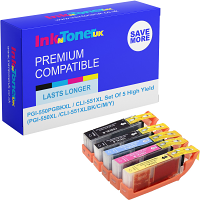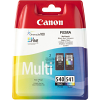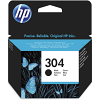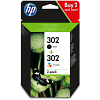Are you confused with all the terminologies used on printers and don’t even know what half of them actually means. Then you have come to the right place as we will go through some of the common questions we get asked when our customers calls us seeking for advice to help them to choose the best kind of printer or cartridges for them. Here’s a guide containing some basic printer specifications that you should understand before deciding to purchase a printer.
Printer Buying Guide

Processing Speed
If you need a speedy printer then you have to decide how many pages per minute you want your printer to print. The higher the pages per minute (ppm) specified on a printer, the faster your printer is, as you will receive your printed documents quicker. Print speeds can vary depending on what type of printing you do e.g. duplex printing or printing high resolution graphics will slow your printer down.
Resolution
Dots per inch (dpi) – You hear resolution a lot, but what does it actually mean? Resolution is basically the number of dots the printer can fit onto a square inch of a paper. The higher the resolution the better it is for professional photographers as they will get more detailed image prints from their printer.
Internal Memory (RAM)
If you work at a busy environment where your workforce prints in high volume, then choose a printer with a high gigabyte of RAM. The more RAM you have in your printer the less likely you will receive errors when printing large files or files in high volume. The RAM stores and processes your print jobs when you send documents to print from your computer, and when printing is complete, the memory is clears to allow for more print jobs to add to the printer. The more RAM you have the more print jobs you can send to your printer at once.
Monthly Duty Cycle
This is a number that indicates the number of pages your printer can print in a monthly basis without any faults. So never go over that monthly cycle. The amount you print per month should fall way below the monthly duty cycle specified by your printer. The higher the number of the monthly duty cycle the better it is, as this determines the quality and durability of your printer.
Networking
Look for network or wireless capabilities on your printer as you might want to share your printer across the network, using Ethernet cables or wirelessly. Most businesses will use a business printer that features Ethernet connections so that every team member can print from their workstations.
Automatic Duplex Printing
Also commonly known as two-sided printing is a good feature to have as your printer will automatically print in both sides of the sheets if you choose the two-sided printing option before printing.
Cartridge Buying Guide

Refills
This is the process where you send us your empty ink cartridges so that we can refill it with our high quality ink cartridges. A specific procedure is followed when refilling your ink cartridges so that it meets our standards and quality requirements so that and you get the best quality out from your printer. We will test the ink cartridges components to make sure that it will work fine and then after leaving the ink cartridge overnight, we will perform a final test to check that the print quality conforms to our high standards.
Compatibles
Compatible cartridge is the second cheapest option to replace your printer cartridges; first being refills (only available for ink cartridges). Compatible cartridges can come in budget compatibles or premium compatibles for toner cartridges. Whilst for ink cartridges they only come in premium compatibles. There are two types of compatible cartridges, one being a brand new copy of the original cartridge and the other being an original cartridge that has been remanufactured (in other words it’s been re-filled with ink).
Originals (OEM)
The original cartridges also referred to as OEM (Original Equipment Manufacturer) is a brand new cartridge that has been manufactured and produced by the same printer company that made your printer.
Capacity
The higher the capacity, the more ink or toner can be fill the inside of the cartridges. Ink/toner cartridges can come in standard capacity, high capacity, extra high capacity, super high capacity, and even ultra high capacity. Some retailers use the word yield instead of capacity e.g. High Yield which means the same thing.
Page Yields
This is how many pages you can expect to print from your ink/toner cartridges until it runs out. The higher the number the better, for example a high capacity toner cartridge will give you a higher page yield than a standard capacity toner cartridge. Please note page yield is only an approximate number of pages that can print with 5% coverage on to your pages. This is the standard measurement the ISO (International Organization for Standardization) creates to inform customers of how many pages their product can print. For example a toner cartridge might give you 50,000 page yields at 5% coverage.
Colours
The type of colour that fills the inside of the ink cartridge. This could be Black, Cyan, Magenta, Yellow, Grey, Matte Black, Blue, Red etc. It is also common to see ink cartridges filled with a Tri-Colour which consists of Cyan, Magenta and Yellow in one single ink cartridge.
Yours sincerely;






























